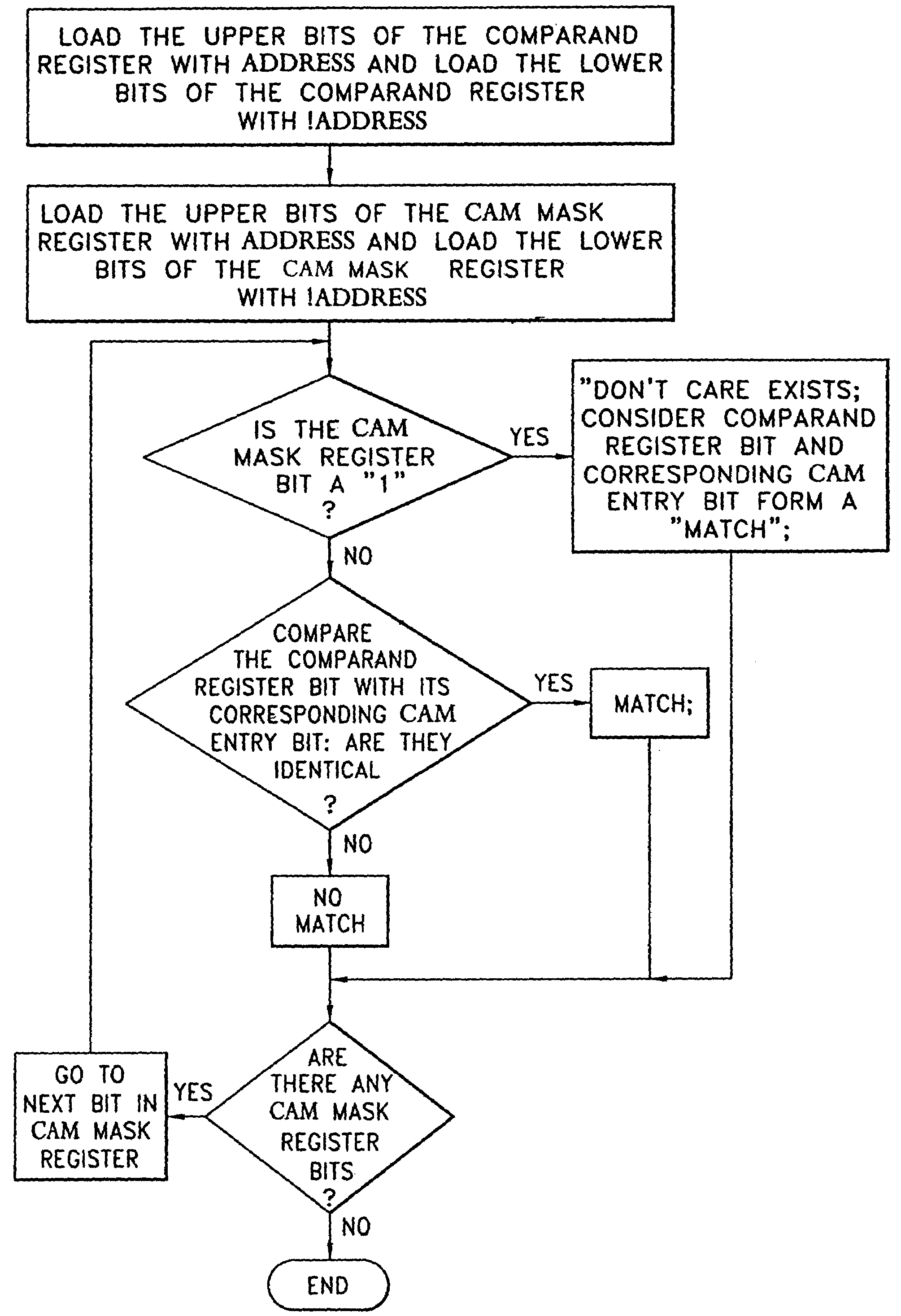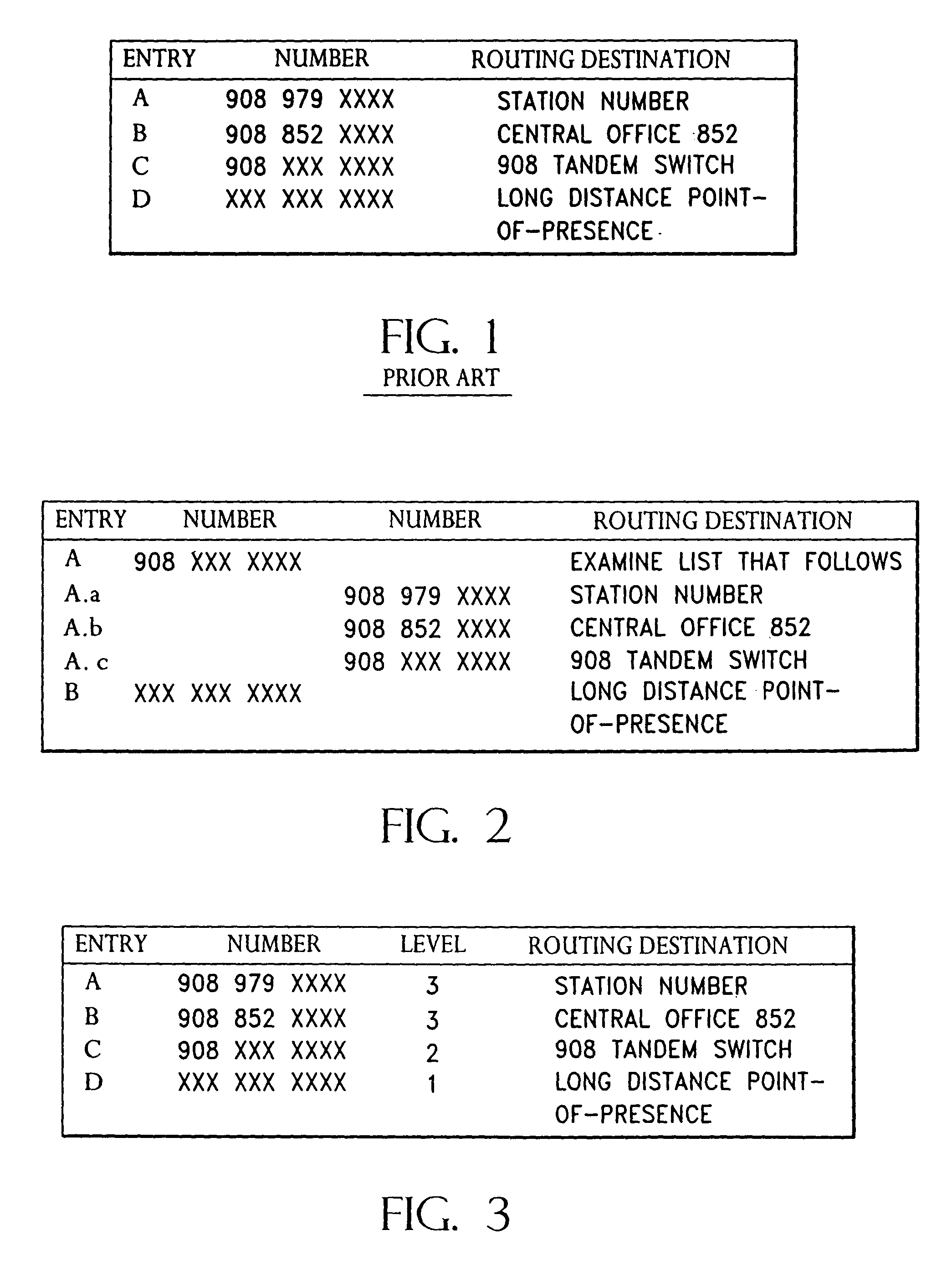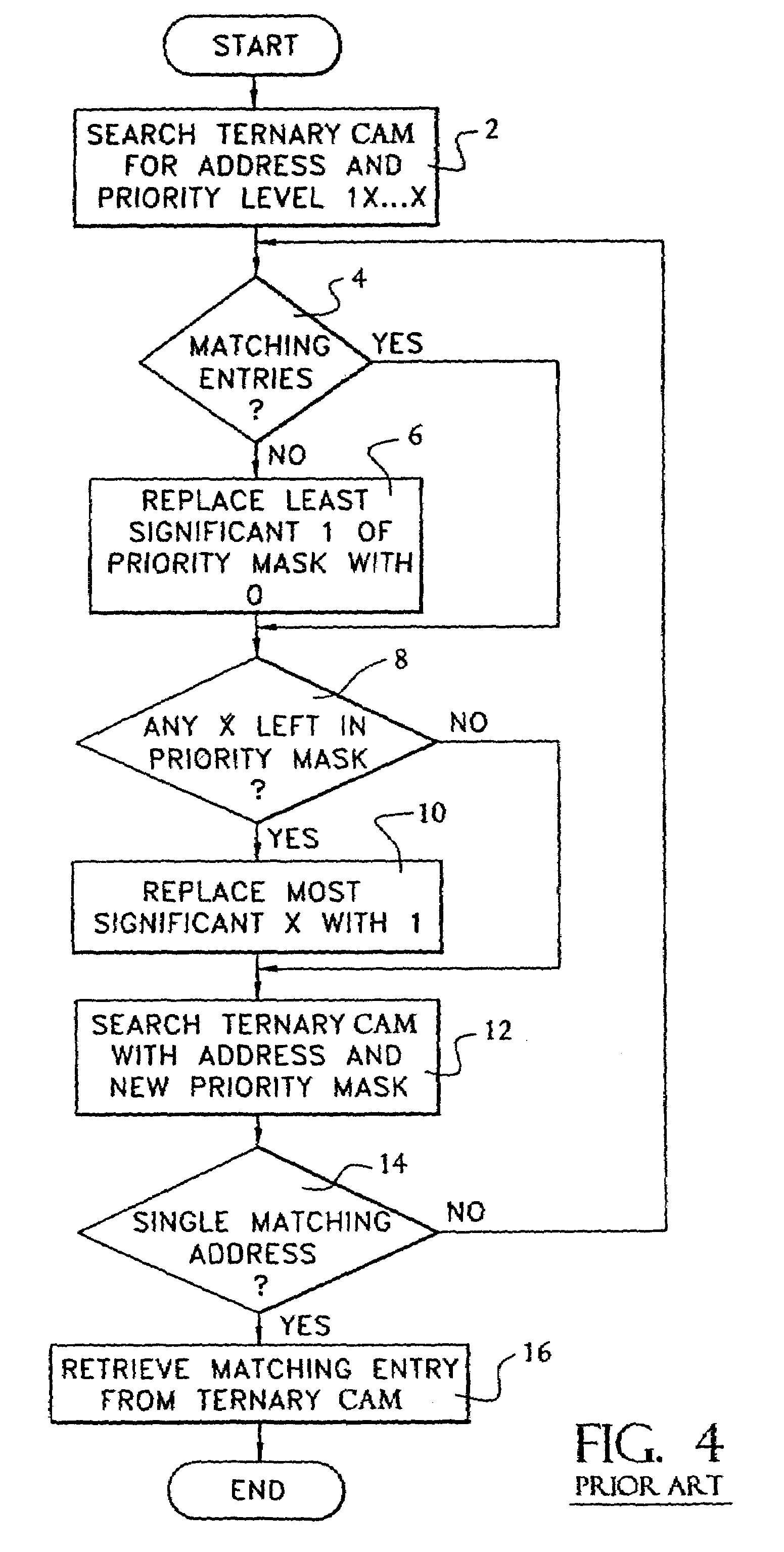Partially-ordered cams used in ternary hierarchical address searching/sorting
a hierarchical address and cam technology, applied in the field of digital hierarchical address filtering, can solve the problems of impracticality of technique, ternary cams require more complex hardware, limited applicability, etc., and achieve the effects of fast hierarchical address translation
- Summary
- Abstract
- Description
- Claims
- Application Information
AI Technical Summary
Benefits of technology
Problems solved by technology
Method used
Image
Examples
Embodiment Construction
[0086]Referring now in detail to the various figures of the drawing wherein like reference characters refer to like parts, there is shown at 20 in FIG. 10, a CAM in which the address entries are arranged by mask number (i.e., the number of contiguous ones in the mask), from the highest mask number at the top of the CAM 20 to the lowest mask number at the bottom, irregardless of the sequence of the addresses themselves. This arrangement, hereinafter known as “partial ordering (PO)”, is depicted in that the addresses A, B, and C are not in alphabetical order, but are stored in the CAM in groups having the same mask number and whereby these groups are stored in descending mask number order (which, by definition, is in increasing CAM address order). On the other hand, FIG. 11 depicts a CAM that does not use PO. FIG. 12 depicts a method 220 for optimally implementing a partially-ordered CAM 20, hereinafter known as “block-edge sorting (BES)”, and will be discussed in detail later. Suffic...
PUM
 Login to View More
Login to View More Abstract
Description
Claims
Application Information
 Login to View More
Login to View More - R&D
- Intellectual Property
- Life Sciences
- Materials
- Tech Scout
- Unparalleled Data Quality
- Higher Quality Content
- 60% Fewer Hallucinations
Browse by: Latest US Patents, China's latest patents, Technical Efficacy Thesaurus, Application Domain, Technology Topic, Popular Technical Reports.
© 2025 PatSnap. All rights reserved.Legal|Privacy policy|Modern Slavery Act Transparency Statement|Sitemap|About US| Contact US: help@patsnap.com



